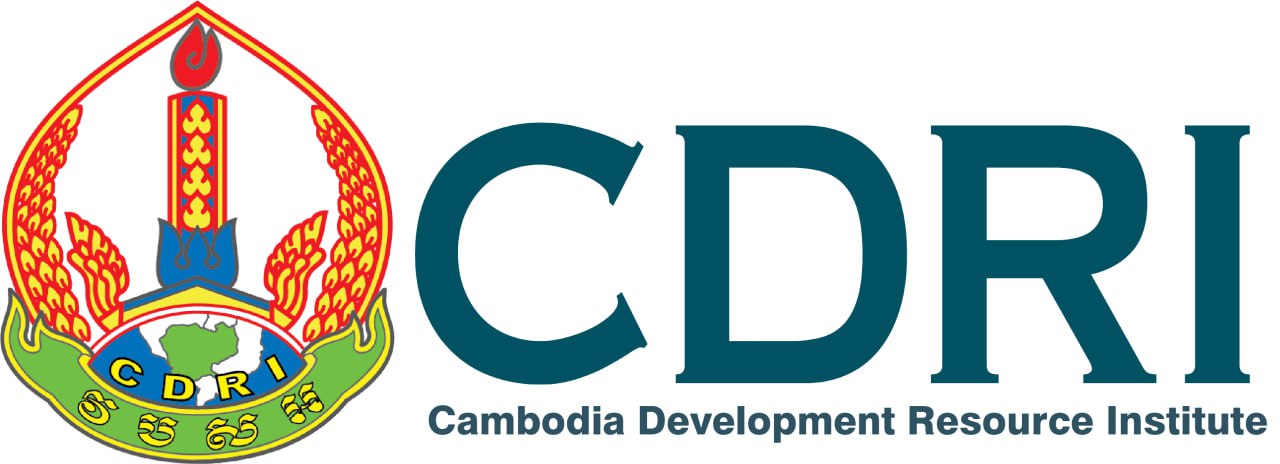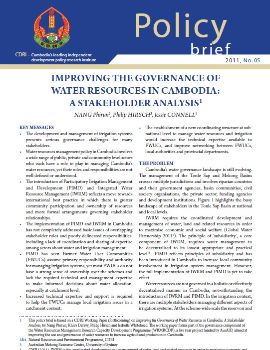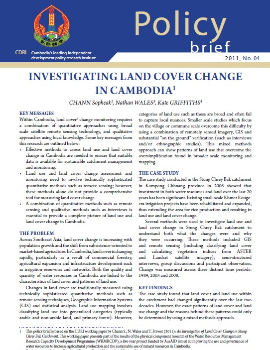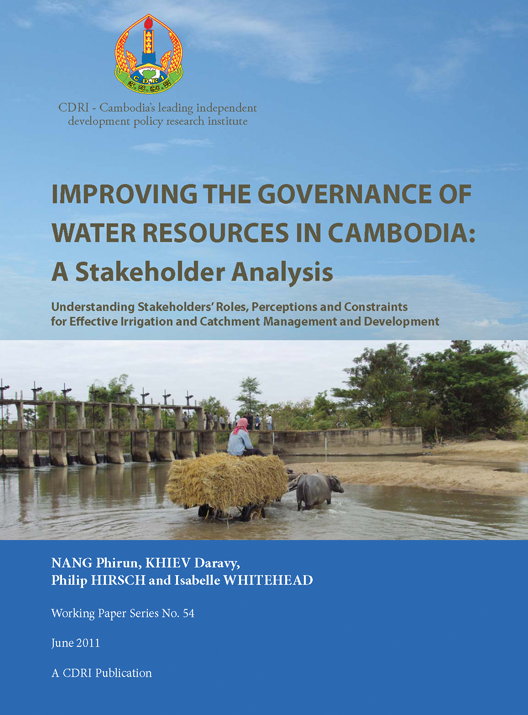
Improving the Governance of Water Resources in Cambodia: A Stakeholder Analysis
Irrigation development and management of water resources present serious governance challenges for many stakeholders in Cambodia. Farmers, government agencies, development organisations and the private sector all have a role to play, yet their roles and responsibilities are not always well defined. Contemporary ideas on water governance indicat...
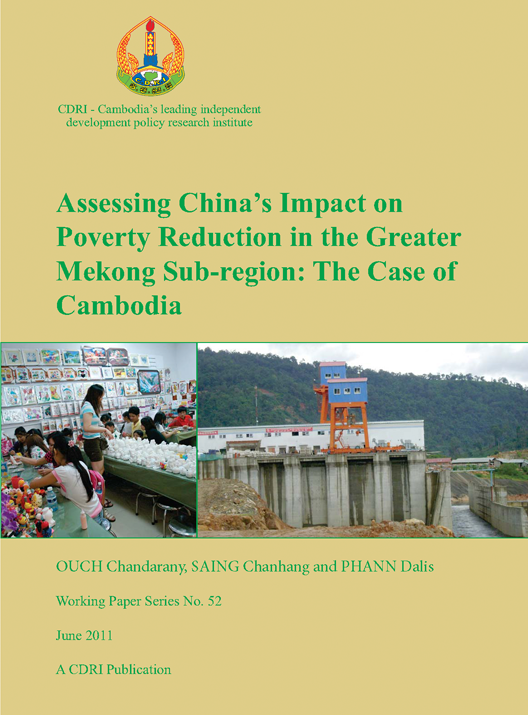
Assessing China’s Impact on Poverty Reduction in the Greater Mekong Subregion: The Case of Cambodia
The deepening trade relation between Cambodia and China has brought about significant expansion of bilateral trade between the two nations; however, Cambodia’s negative trade balance continues to widen at an average annual growth rate of 34 percent. The study uses the framework developed by Jenkins and Edwards (2004) to examine China-Cambodia t...
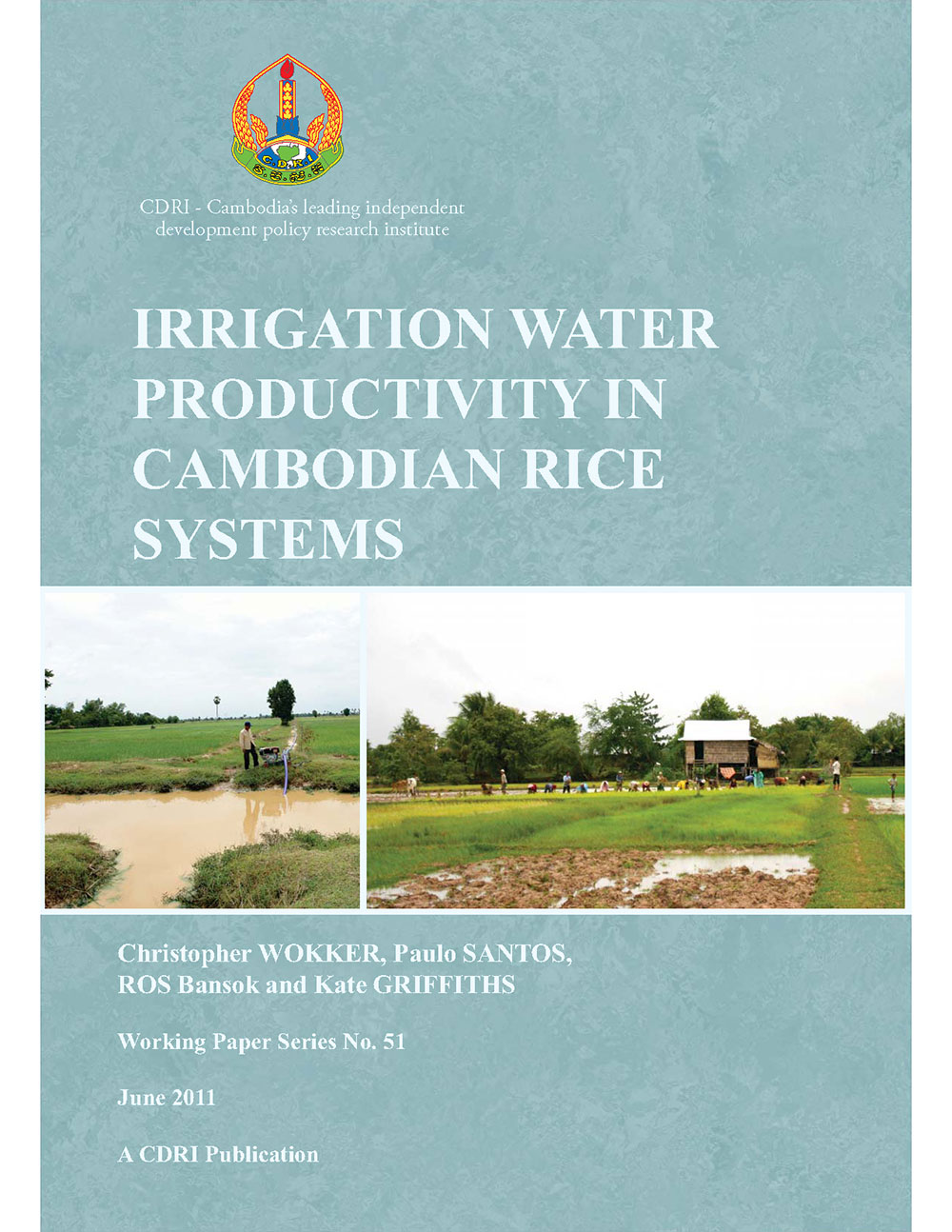
Irrigation Water Productivity in Cambodian Rice Systems
Cambodia’s economy is based largely on the agricultural sector which contributes 33 percent of the national GDP and employs more than 67 percent of the national labour force. Rice production is central to this sector: not only do the majority of Cambodia’s farmers depend directly and indirectly on the success of the rice crop each year, but bei...
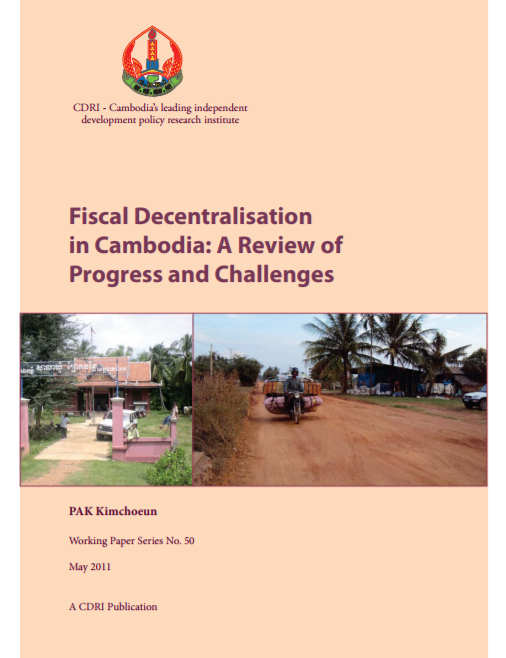
Fiscal Decentralisation in Cambodia: A Review of Progress and Challenges
To achieve democratic development, Cambodia’s next step towards fiscal decentralisation will focus on both institutional and service delivery reform at district level so as to strengthen the capacity of the sub-national administration and better link it to sectoral service delivery. To move forwards, fiscal decentralisation needs to be comprehe...
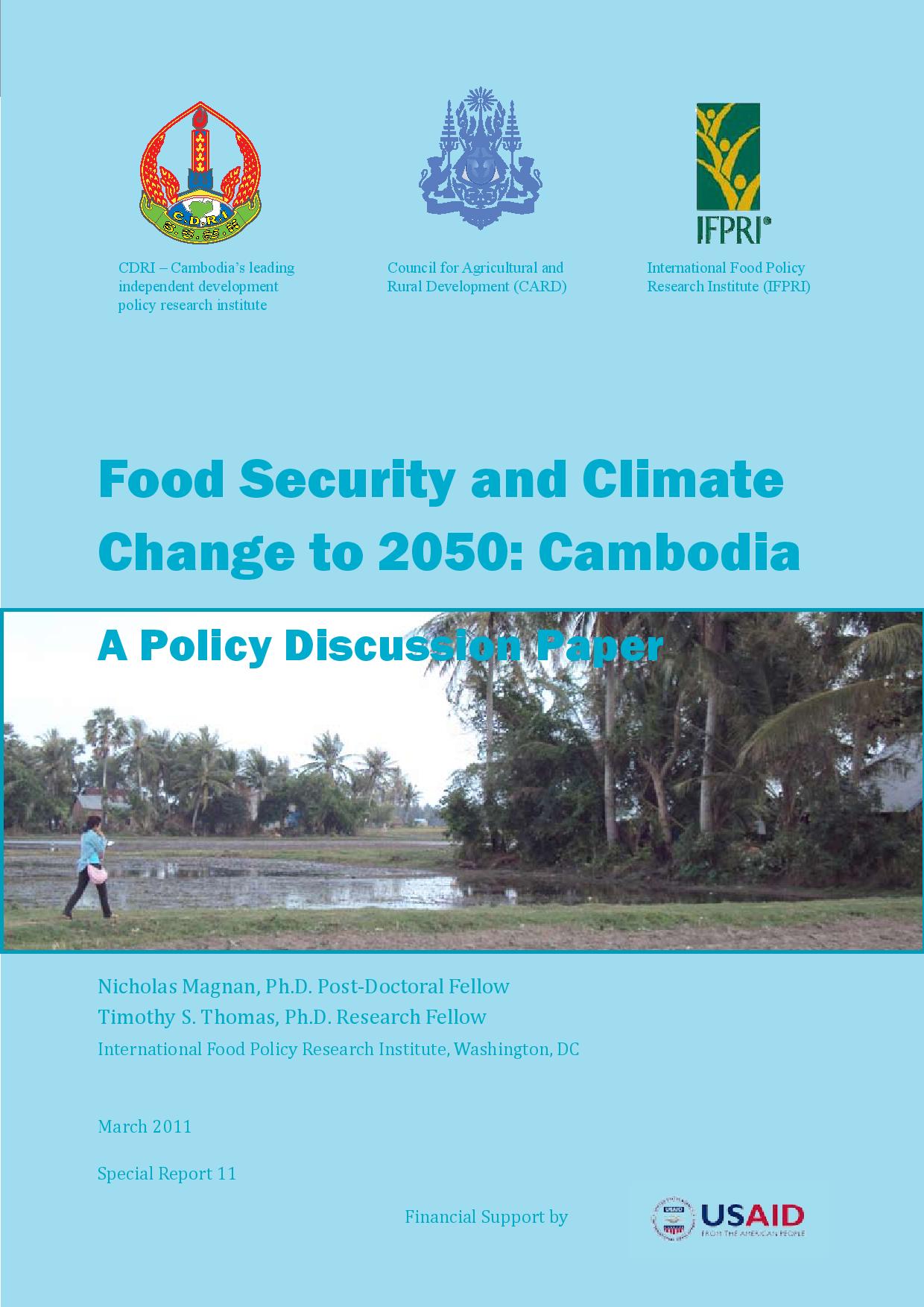
Food Security and Climate Change to 2050: Cambodia
In Cambodia, two thirds of the population are economically dependent on agriculture and most farmers are poorly equipped to adapt to climate change. Because of international linkages through trade and prices, any complete analysis of the potential domestic effects of climate change must consider impacts on a global scale. This paper highlights a se...
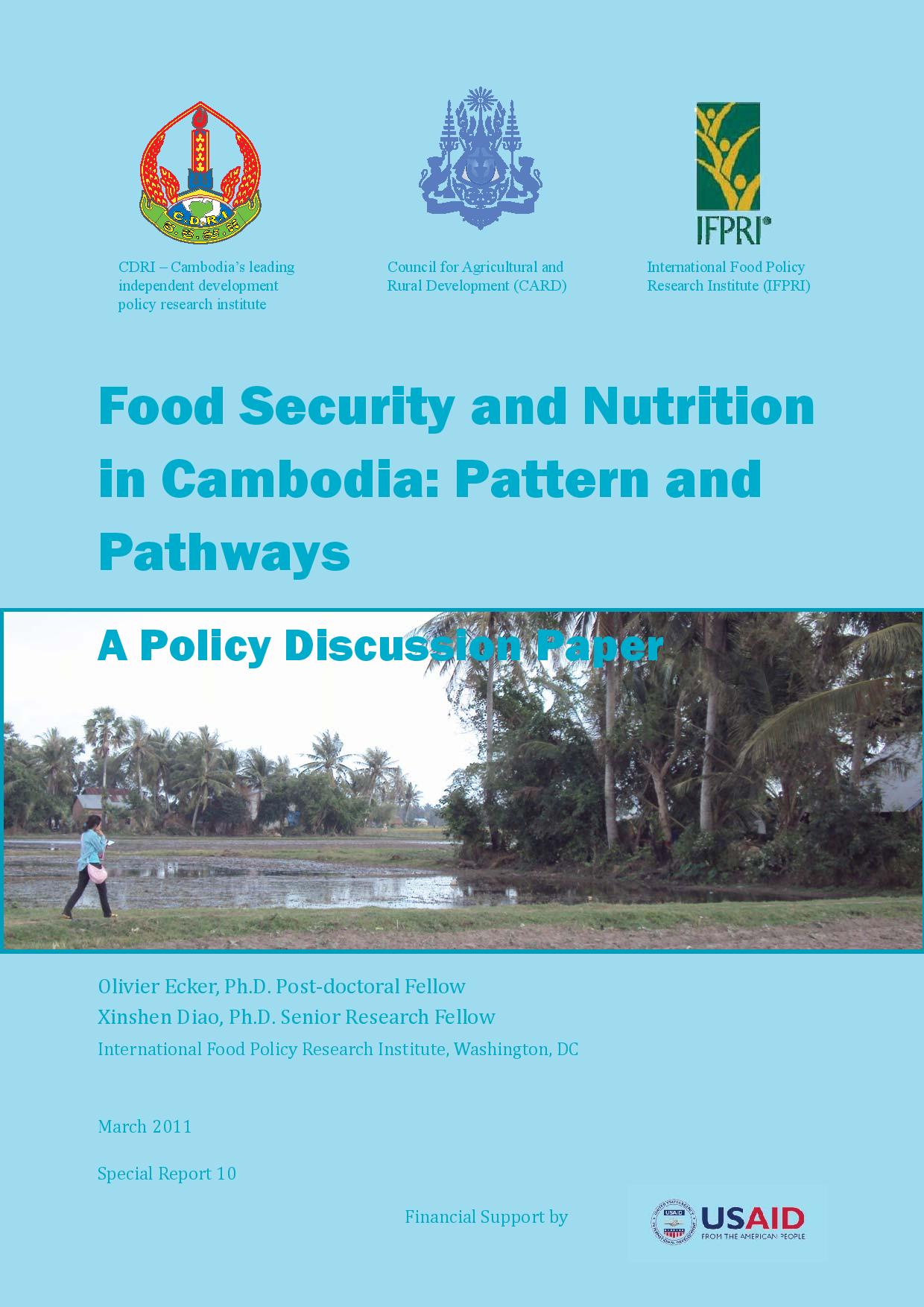
Food Security and Nutrition in Cambodia: Patterns and Pathways
Through comparison with other countries in Asia, this paper analyses the patterns of hunger and malnutrition in Cambodia and possible pathways to ensure the country’s future food security. In the face of increased inequality and high population growth, Cambodia has managed to make considerable progress in reducing hunger and malnutrition especially...
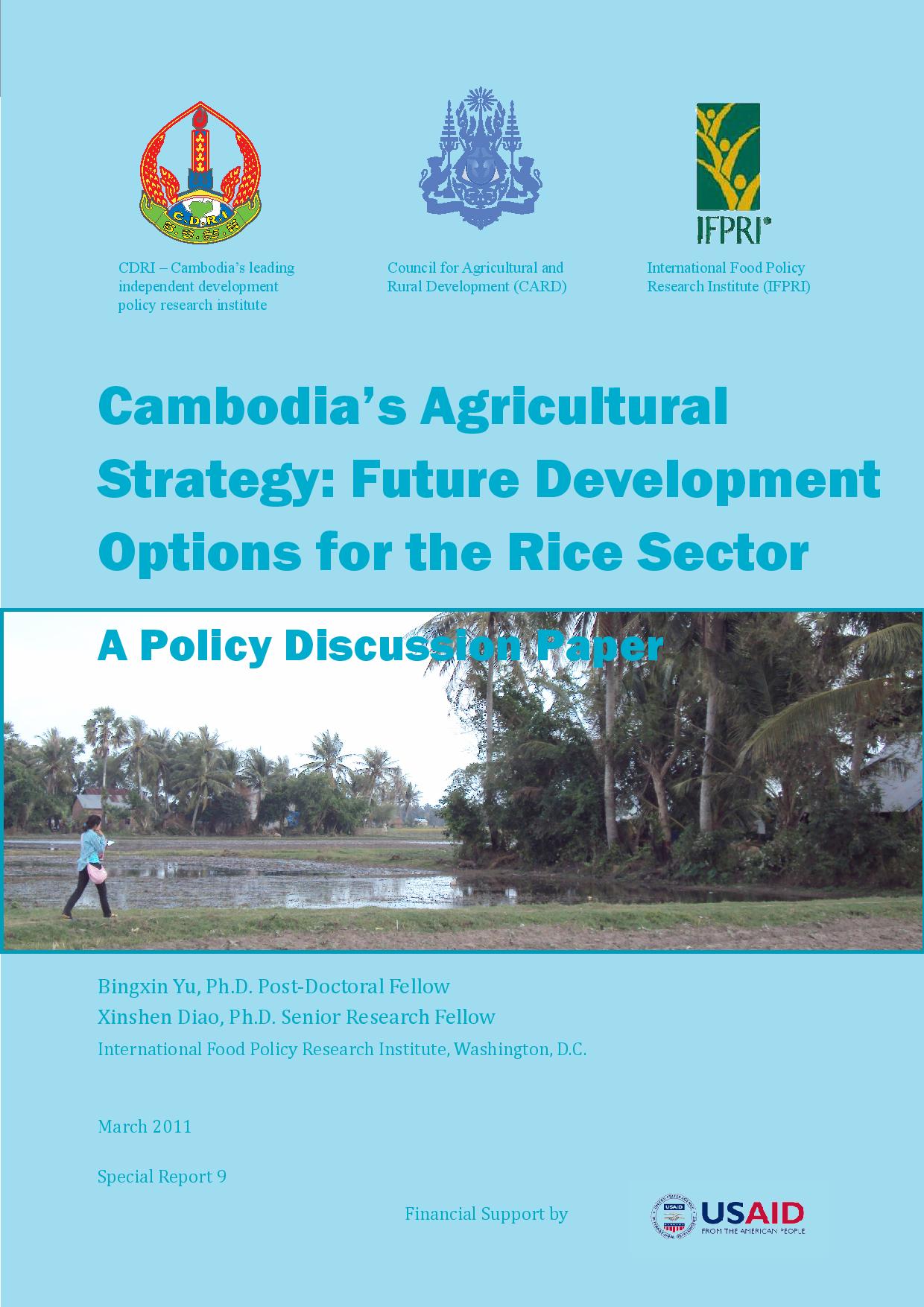
Cambodia’s Agricultural Strategy: Future Development Options for the Rice Sector
This paper first reviews the performance of the rice sector and rice-related government policies and interventions and then explores a possible development path for rice by comparing the current situation in Cambodia with the early development stages of Thailand and Vietnam. With strong government support, rice production has grown rapidly since 20...
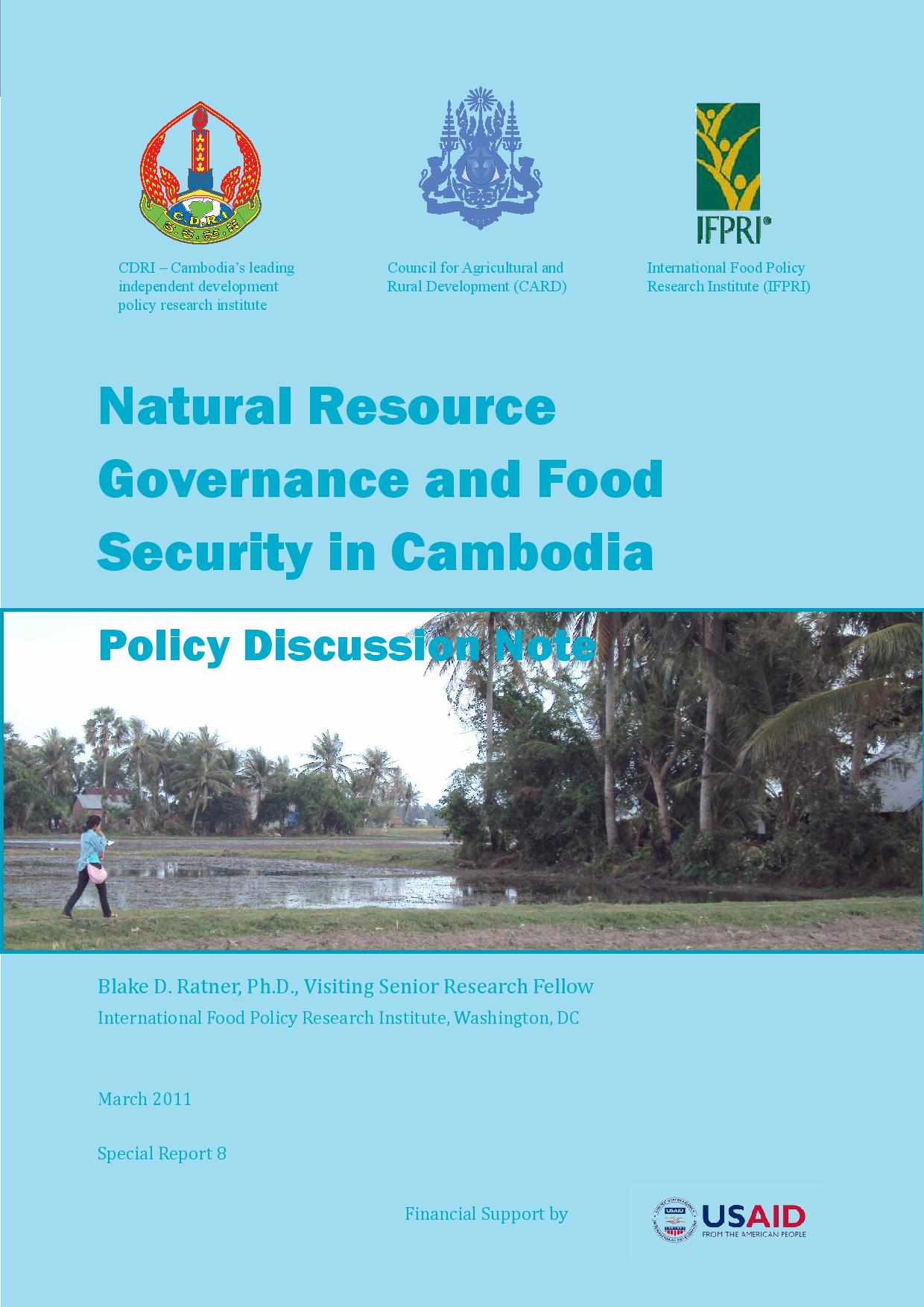
Natural Resource Governance and Food Security in Cambodia
Cambodia experienced a decade of rapid economic growth until 2007, but that growth depended significantly on exploiting its natural resource base and was marked by an unusually rapid rise in inequality. While investments in health, education, rural infrastructure and microcredit are essential to improving the asset portfolio of vulnerable hou...
